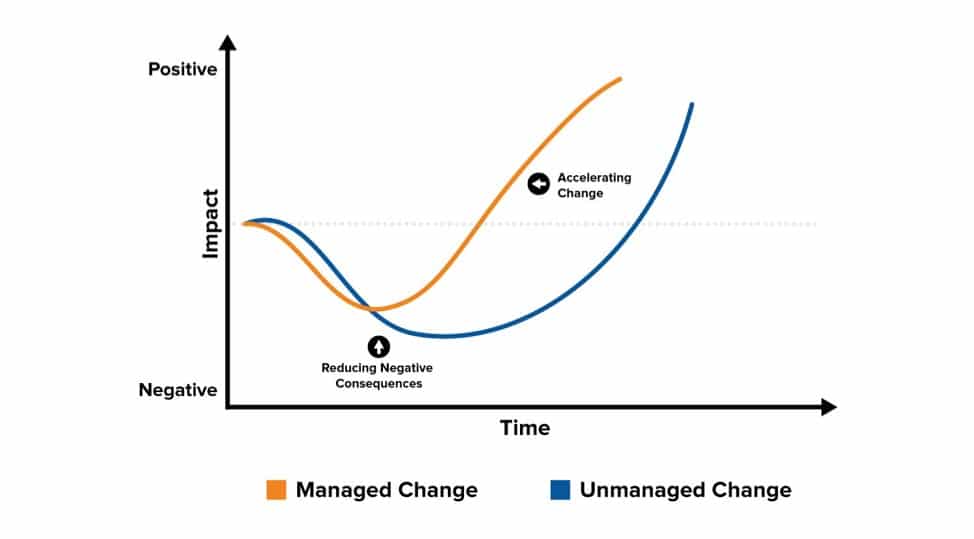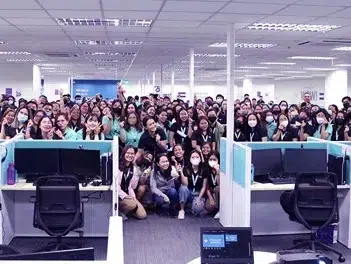A “Two Office Strategy” is becoming more common for accounting firms who want to expand capacity, while improving margins and profitability:
- “Office 1” is onshore, and is primarily responsible for sales, strategy, service and workflow management.
- “Office 2” is offshore, and is responsible for delivering much of the process-driven and procedural work.
How well you communicate and collaborate between these two offices will heavily influence the success of your workflow delivery process.
In this article we’ll review best practices around engaging your local staff in your outsourcing strategy.
Dispelling The #1 Global Outsourcing Myth
When many people hear about Global Outsourcing for the first time, they automatically think, “job replacement”. In fact, the opposite is true:
Global outsourcing actually creates more stimulating, higher-paid and more responsible roles for your local team members, as we cover in our article, Does Global Outsourcing Cost Local Accounting Jobs?.
How To Fast-Track Engagement
Having worked through this process with more than [toa_count target=”firms”]+ accounting firms, we’ve gathered a lot of data on what works and how to fast-track your success.
While there is always some level of disruption as you change to a different process, the way you approach change management will heavily influence your outcomes.
Managed Change gets you to a better result faster and with less negative impacts than Unmanaged Change, as this graphic shows:

Step 1: Empower Your Team With Your Firm’s Vision
If your local team don’t know WHY you’re exploring global outsourcing, they may be skeptical.
Tell them about how you see the industry in 10 years. Then outline where your firm sits currently, and what you need to do in order to have the firm you want in 10 years’ time.
If all this “Mission and Vision” stuff doesn’t come naturally to you, some of the best tools for creating and communicating a practical vision and strategic plan include:
- The book Scaling Up by Verne Harnish (low-cost)
- The 1-Page Strategic Plan template by Gazelles (free)

Step 2: Have Your Team Create A List Of Tasks That Can Be Outsourced
Once you start looking, you’ll immediately find that almost every local team member is performing tasks that they shouldn’t be.
The easiest way to find out what these tasks are is to ask your team.
Ask them to each work out what their hourly rate is, and then write down every task they do and put it into one of four buckets:
- Tasks that could be outsourced and done by someone whose billable rate is lower.
- Tasks that add value and are in line with their charge out rate (and couldn’t be done offshore more effectively or for a lower rate).
- Tasks that are taking up the most time.
- Tasks that they find fascinating and motivating, and would love to do more of, if they had the time.
This provides you with a good list of what can be outsourced for every team member in your firm.
If you’d like a little more inspiration, download a copy of our Free Checklist, “88 Time-Consuming Accounting Firm Tasks That Are Most Easily Outsourced”.
When one of our clients did this, they discovered they could collectively save a total of 100 billable hours per month simply by employing someone offshore to manage their emails and save tasks directly into the firm’s CRM system for action.
This alone saved them significant time and money (all for $1,000 per month for a full-time offshore administrator).
Step 3: Keep Your Team Informed And Give Them Ownership
To keep your team engaged, get them involved in the discussions and implementation of your strategy.
Keeping them in the dark will only concern them and make them question what is happening.
Remember, your firm needs to embrace the change, as this may be the biggest change your firm has made in some time.
Step 4: Reassure Them And Show Them Their Jobs Aren’t At Risk
Continue to reassure your local team that this is a growth strategy and not a cost reduction strategy.
Team members that are currently stuck in front of a screen doing process-driven work can now spend more time on higher-value tasks such as:
- Client-facing sales and advisory work
- Project management and team leadership
- Innovation and new product development
All of these things are valuable and stimulating activities that will usually lead to pay increases for local staff as they add more value to clients and your firm.
What If Some Staff Resist The Change?
When our clients have implemented this process, we’ve usually seen strong enthusiasm from local team members.
However, there may be some team members who aren’t able to cope with the change. In the worst case scenario, you should be prepared to lose some team members.
However, this shouldn’t deter you from advancing your firm, your team and your clients into the future.
The reality is that many firms who have embraced the Global Outsourcing Trend are hiring more staff onshore, not fewer, because they can now grow with products and services that are in high demand, supported by the right operating model.
If you’d like to learn more, click here to get a Free Accounting Outsourcing Strategy And Plan for your firm. This is a detailed blueprint for rapidly scaling your capacity, margins and profits for free – a $500 value.

















